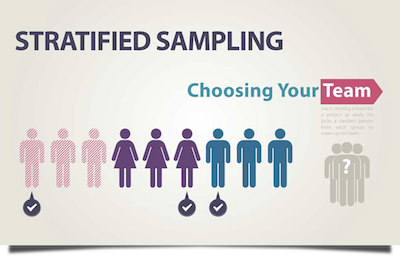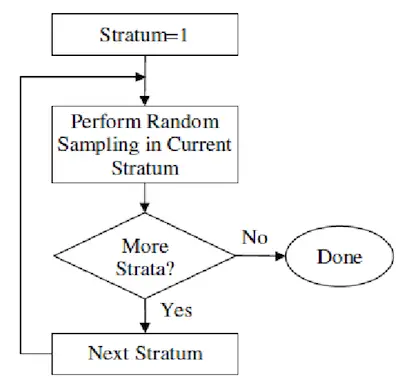In case you have been learning statistics, then you probably already heard about stratified sampling. In case you don’t remember what stratified sampling is, you just need to know that it is a process that is used in market research that involves dividing the population of interest into smaller groups. These smaller groups are called strata.
Discover the best statistics calculators.

Then, samples are pulled from the strata and the analysis is performed to make all the inferences about the greater population of interest.
One of the most important concepts that you need to keep in mind when talking about stratified sampling is probability sampling. Simply put, it leverages random sampling techniques to create a sampling.
While stratified sampling may be a new terminology for you, you may have already heard the term quota sampling or proportional sampling, which means exactly the same thing.
Learn more about the degrees of freedom for t tests.
When To Use Stratified Sampling
Now that you already understand the concept of stratified sampling, it is time to understand when to actually use it.

Strategy sampling is used when:
- A researcher’s target population of interest is significantly heterogeneous;
- A researcher wants to highlight specific subgroups within his or her population of interest;
- A researcher wants to observe the relationship(s) between two or more subgroups; and,
- A researcher’s goal is to create representative samples from even the smallest, most inaccessible subgroups of the population he or she is interested in.
When a researcher is using stratified sampling, he has a higher statistical precision compared to when he simply decides to use simple random sampling. And the reason is simple: the variability within the subgroups is lower compared to the variations when dealing with the entire population at large.
Thanks to the statistical precision that stratified sampling provides, a smaller sample size is required, which can ultimately save researchers time, money, and effort.
The Stratified Sampling Process

When you are trying to perform a stratified sampling, then you need to know that you need to follow a method. So, here are the steps that you need to follow:
Step #1: Divide the population into smaller subgroups, or strata, based on the members’ shared attributes and characteristics.
Find out everything you need to know about the z table.
Step 2: Take a random sample from each stratum in a number that is proportional to the size of the stratum.
Step 3: Pool the subsets of the strata together to form a random sample.
Step 4: Conduct your analysis.
Example For Stratified Sampling
Now that you already know what is and the process that you need to follow, there is nothing better than an example to understand this concept.
Let’s say that a group of researchers want to distribute a survey to 50 students that are either juniors or seniors in traditional American high school.
Discover how to use the student’s t test.
Here’s the gender breakdown:
| Year | Boys | Girls |
| Junior | 126 | 94 |
| Senior | 77 | 85 |
| Total | 203 | 179 |
One of the main difficulties of this study is that there is a lack of both time and money. Therefore, this survey can only be distributed to 50 students. So, to get more actionable and informative results, the sample needs to accurately represent the larger population of all students at the school.
So, here’s the question: how many senior girls should be included in the 50 person sample?
The reality is that by looking at the above table, you can easily understand that the researchers were able to take the survey to 382 students, 85 of which were senior girls. But how does this translate to a sample of just 50 students?
In order to determine this, the researchers would simply take the fraction of 85/382 and multiply it by the sample size of 50.
This yields a result of 11.2, which when rounded down, represents 11 senior girls that need to be surveyed in order to have a representative sample.